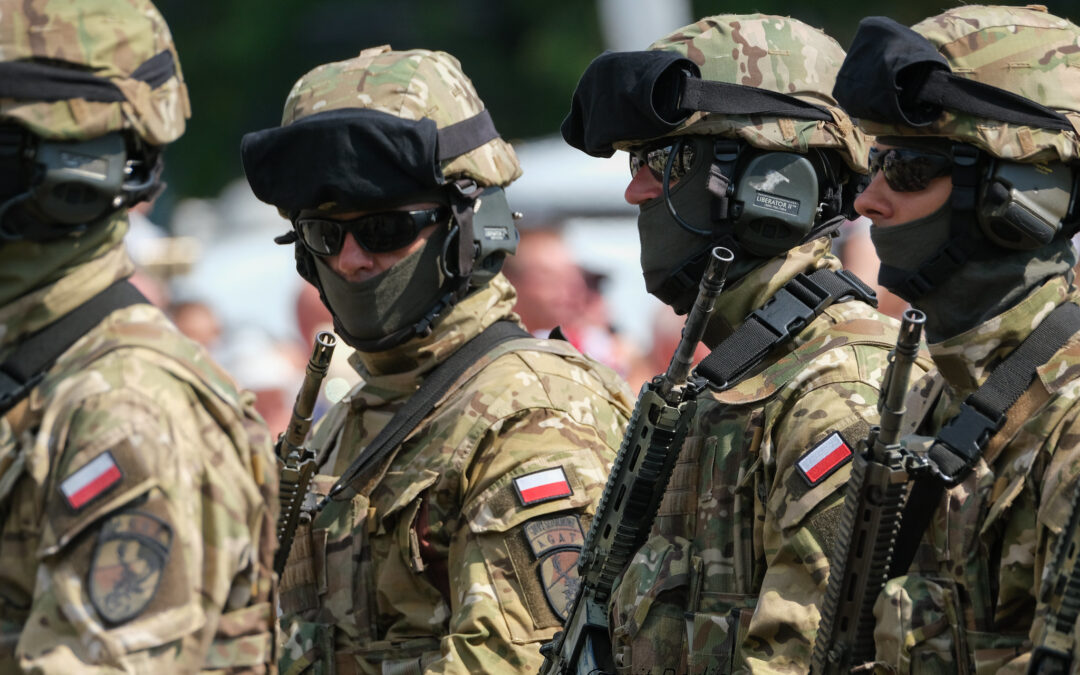Poland’s president, Andrzej Duda, has signed into law a bill that will boost defence spending to 3% of GDP – one of the highest levels in NATO – and more than double the number of troops serving in the armed forces.
Duda noted that the “Homeland Defence Act” was first proposed by the government last October, when ruling party chairman Jarosław Kaczyński described it as a means of countering “Russia’s imperial ambitions”.
“This law was created because we foresaw that Russia might attack Ukraine…and that in the future we may be the next target for the attack of voracious imperial Russia,” said the president.
Duda thanked politicians from across the political spectrum for supporting the legislation. On Thursday it received unanimous support in the opposition-controlled Senate. Last week, it was likewise approved without a single opposing vote by the lower-house Sejm, where the government has a majority.
Under the new law, state defence spending this year will be equivalent to at least 2.2% of GDP. That will then increase to at least 3% next year and remain at that level. Poland would therefore become one of the biggest relative spenders in NATO, whose members are expected to reach a target of at least 2%.
According to estimates for 2021, ten members of the alliance were on track to meet that threshold last year. The highest relative spenders were Greece (3.82%), the United States (3.52%) and Croatia (2.79%). Poland’s figure was 2.1%.
#NATO Allies are increasing defence spending to ensure deterrence and defence in the Euroatlantic area.
10 Allies intend to invest 2% or more of GDP in #defence in 2021:
🇭🇷 🇪🇪 🇫🇷 🇬🇷 🇱🇻 🇱🇹 🇵🇱 🇷🇴 🇬🇧 🇺🇸Read ▶️ https://t.co/Xt23Ki7I6z pic.twitter.com/mBb00LPFCr
— Baiba Braže (@NATOBrazeB) June 11, 2021
Under the new law, every four years the government must set out a detailed 15-year plan for the improvement and modernisation of the armed forces, reports the Polish Press Agency (PAP).
The legislation foresees the size of the armed forces more than doubling, from the current 143,500 troops (111,500 professional and 32,000 territorials) to 300,000 (250,000 professional and 50,000 territorials), notes news service 300Gospodarka.
To this end, the Homeland Defence Act will establish a simplified recruitment process, more flexible promotion rules, and a system of incentives to encourage military service. Meanwhile, voluntary basic military service, compromising one year’s training, will also be introduced.
Speaking alongside Duda at yesterday’s signing ceremony, Kaczyński – who serves as deputy prime minister with responsibility for national security – noted that recent events have shown how necessary defence spending is.
“We must have armed forces worthy of a 40-million-strong country with a difficult geographical position,” said Kaczyński, quoted by PAP. “We have great allies, but we must also defend ourselves.”
In June last year, Kaczyński reportedly told a special closed session of parliament that Russia had prepared plans to invade Poland. The Polish security services have also indicated that Russia has been behind a series of cyberattacks against high-ranking figures.
Last year’s border crisis – in which tens of thousands of people, mostly from the Middle East, attempted to cross into Poland with the help of the Belarusian authorities – was also described by Polish officials as a form of “hybrid warfare” with Russian backing.
Russia’s military buildup around Ukraine earlier this year and subsequent invasion have prompted Poland’s NATO allies to boost their presence in the country.
The US has stationed thousands of new troops in Poland, bringing its total forces in the country to around 10,000. Earlier this month, it announced the deployment of two Patriot missile batteries to Poland, and in February it also transferred a number of F-16 fighter jets there.
Meanwhile, the United Kingdom this week confirmed that it was sending its Sky Sabre advanced air defence system to Poland along with 100 additional military personnel. Last month, 350 British troops had already been dispatched to Poland.
Britain's plans to deploy its new Sky Sabre advanced air defence system to Poland were first revealed last month, just before Russia's invasion of Ukraine https://t.co/yn5Zr4qZFm
— Notes from Poland 🇵🇱 (@notesfrompoland) March 17, 2022
Main image credit: Gerrit Burow/Flickr (under CC BY 2.0)

Daniel Tilles is editor-in-chief of Notes from Poland. He has written on Polish affairs for a wide range of publications, including Foreign Policy, POLITICO Europe, EUobserver and Dziennik Gazeta Prawna.




















